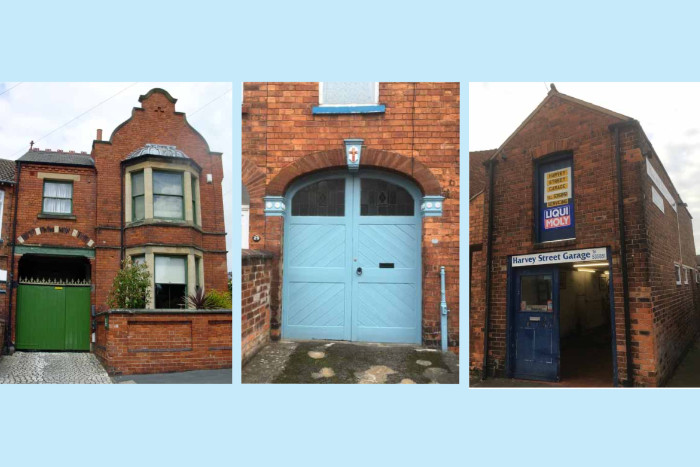
Animal houses in the West End
In the fifth of a series of articles highlighting some of the work of The Survey of Lincoln, Shirley Brook investigates surviving evidence of late-Victorian and Edwardian accommodation for animals in the West End.
The variety of animal houses to be observed in the West End reveals a past closeness between people and animals which modern residents might find surprising.
Few such buildings are still used for their initial purpose. Some retain their original form but many have been converted to housing, workshops or garages. A survey of the West End, seeking evidence of buildings erected to house animals, revealed that a substantial number of them have survived in one form or another.
Accommodation for horses was vital when vehicles powered by the internal combustion engine were still a novelty. Tradespeople in the newly-built West Parade area relied on horses to pull their delivery carts. Stables were frequently two-storey structures with a hay loft over the horse stalls. The building now occupied by Harvey Street Garage (4 Harvey Street), standing end-on to the road, can be identified as former animal housing from the row of apertures on the north wall and the pitching door, at first-floor level, in the gable end.
The need to move goods to and from the wharfs at Brayford Pool meant that there was ready work for carting contractors operating from the West End. William Sharpe, a carting contractor and general dealer, received permission to erect a stable yard containing 15 loose boxes at 26 Wellington Street in 1906. Other yards containing stables included those behind 6 Allison Place and 17 Charles Street West. One which retains some of its original appearance, particularly its cobbled entrance and yard, can be observed at 4 Bedford Street. Early twentieth-century trade directories record as many as eight carters based in the West End, with several based on Newland Street West, where working stables serving the Park Riding School can still be observed.
Arched cart entrances can be found throughout the West End. These allowed entrance for the owners’ carts and provided for the delivery of hay for feed, as well as bedding straw. Early twentieth-century directories tell us that J. Witterick, a carter and coal dealer, occupied premises at 27 Gresham Street. The substantial house with its ornate porch, at 3 Tennyson Street, built in 1892, suggests a thriving business. The yard behind contained stables, a cut house for preparing feed, a cart shed, pigsties, a manure pit and a hospital box for accommodating a sick animal, or a horse in foal. Dairy businesses were also to be found in this area such as at 8 Bedford Street, 36 Drake Street, 101 Newland, and four dairy businesses in Carr Street. There were also cattle sheds located on Roseberry Avenue, adjoining the grazing land on the West Common. Little more than 100 years ago the air in the residential streets of the West End would have been full of the sweet smell of hay and the pungent odour of warm manure.
The present survey has identified only a small number of these former animal houses. Many more of them await recognition.
An extended version of this article can be found in The Survey of Lincoln’s book Lincoln’s West End: A History, an electronic version of which can be found on the group’s website. A second volume examining the history of the West End is due to be published in November 2022. The Survey’s latest publication, Lincoln’s Engineering Industries: A Concise History, is available now in Lincoln bookshops. For more information, see www.thesurveyoflincoln.co.uk.
